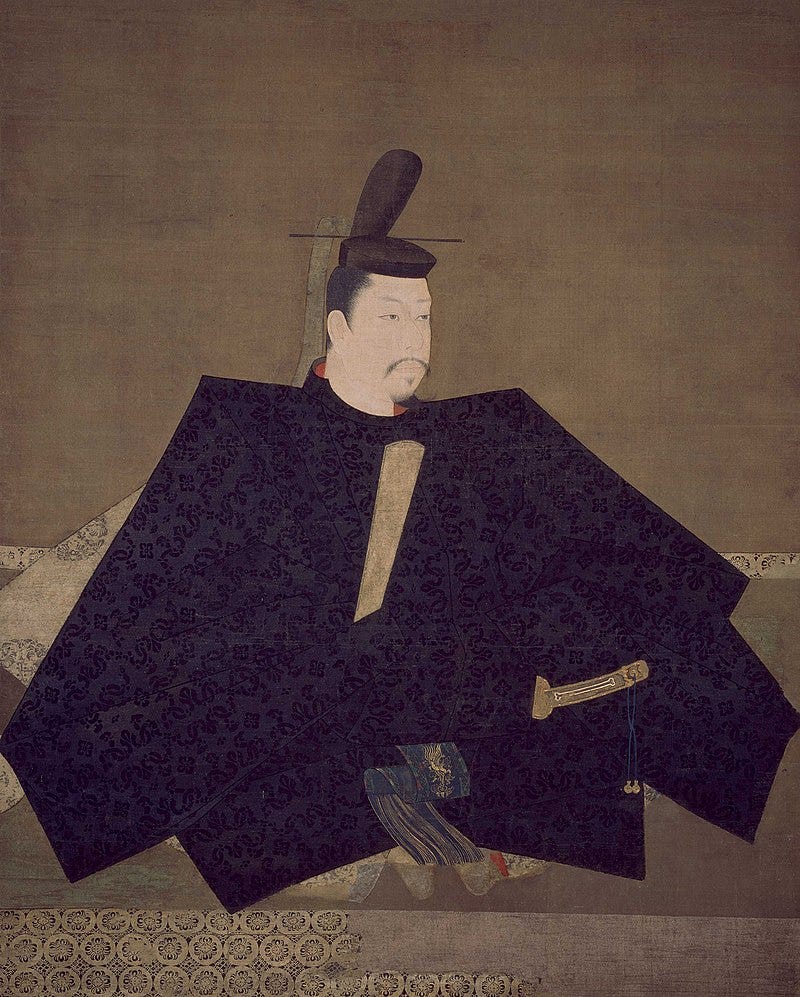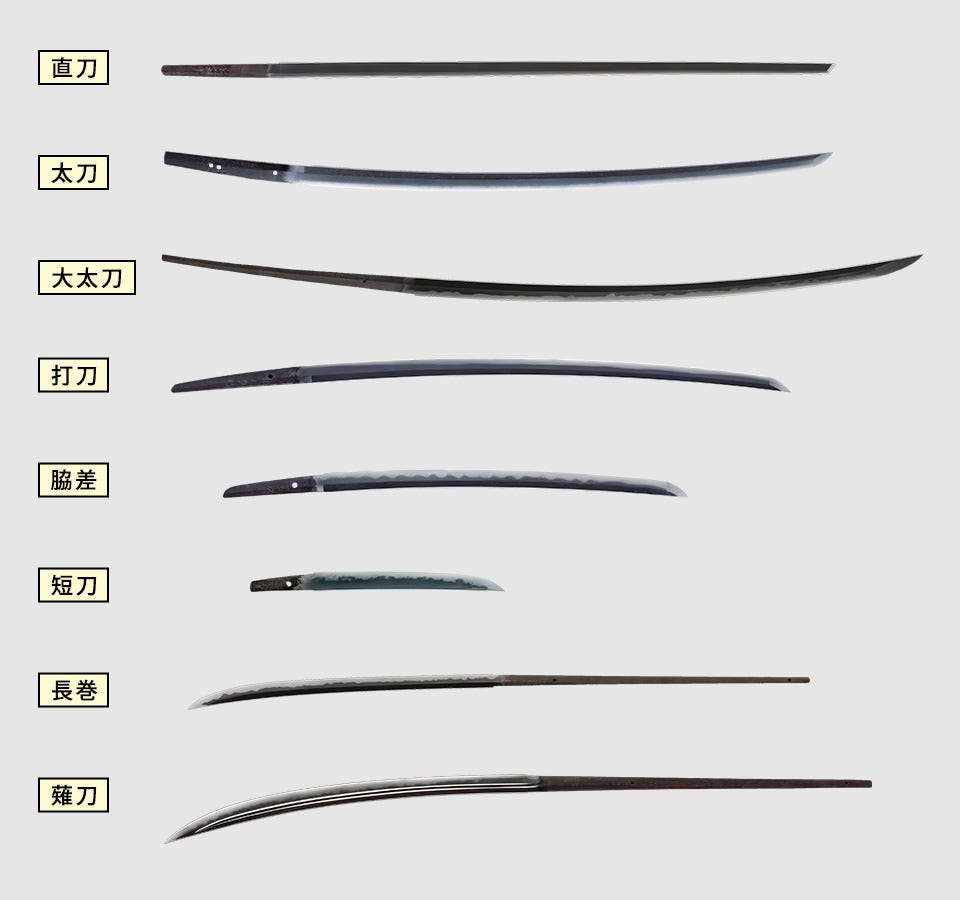The uchigatana (打刀) is a type of Japanese sword that emerged during the Kamakura period (1185-1333) and became popular in the Muromachi (1336-1573) and Sengoku (1467-1603) periods. It represents an important evolution in Japanese weapons and is the direct forerunner of the modern katana.
As history progressed into the Nanbokuchō and Sengoku periods, foot soldier combat formations became the norm. This brought about a transformation in sword usage, shifting from single-handed techniques on horseback to two-handed techniques on the ground. This change also spurred the evolution of sword designs. During the Kamakura period (1185–1333), samurai carried short blades known as koshi-gatana (腰刀) at their waist for self-defense. However, during the Nanbokuchō period, these blades were extended to reach the length of a tachi. This development marked the origin of the uchigatana (打刀), which would later become a standard weapon for samurai and a self-defense tool for commoners.
Main characteristics of the uchigatana:
Curvature: Similar to the katana, although generally with a less pronounced curvature than the tachi.
Length: Its length was usually between 60 and 70 cm (compared to the modern katana, which is usually between 70 and 80 cm), making it lighter and easier to handle in tight spaces.
Position of use: It was worn tucked into the belt with the blade facing upwards, which facilitated immediate drawing and cutting techniques (iaijutsu).
Interestingly, the appearance of the uchigatana during the Muromachi and Sengoku periods coincided with the emergence of the earliest classical kenjutsu schools, such as Katori Shintō-ryū (香取神道流), Nen-ryū (念流), and Kage-ryū (陰流). Although both the tachi and the uchigatana were still in use at this time, the growing need for techniques suited to the uchigatana—a more accessible and manageable sword for lower-ranked samurai and the general population—likely accelerated the development of kenjutsu.
The schools associated with the "Seven Schools of Kantō" originated in Kashima and Katori. Chiba Tsunetsune no Jōsaemon Ienaga (千葉常長の長威斎家直), a vassal of the Chiba clan and founder of Katori Shintō-ryū (香取神道流), withdrew to Mount Umeyama near the Katori Shrine. After a thousand days and nights of rigorous training, he founded the school. The creation of Katori Shintō-ryū marked the systematization of kenjutsu, establishing a lineage with well-organized techniques.
In contrast to the sword traditions of Kashima and Katori, the Nen-ryū school (念流), considered a successor of the "Eight Schools of the Capital," was founded by Sōma Shirō Yoshimoto (相馬四郎義元), later known as Nenami Jion (念阿弥慈恩). After the death of his father, he fled west and became a monk. At Kurama Temple in Kyoto, he reportedly received mysterious techniques from a strange being. Later, at the age of sixteen, he was taught secret methods by a monk in Kamakura and attained enlightenment in the art of the sword at Anraku-ji Temple in Tsukushi. After avenging his father, he adopted the name "Jion" and traveled throughout Japan teaching his techniques. Among his most notable disciples were the "Fourteen Sages" (Jūyon Tetsu), including Chūjō Hangan (中条判官), founder of Chūjō-ryū (中条流), and Saru Gozen (猿御前), who is associated with Kage-ryū (陰流). This connection between Chūjō-ryū and Kage-ryū is particularly intriguing.

The founder of Chūjō-ryū (中条流), Chūjō Hyougo no Kami Nagahide (中条兵庫頭長秀), belonged to a distinguished family tracing its lineage to Minamoto no Yoritomo. The Chūjō family transmitted sword techniques known as Chūjō-ryū Heihō (中条流平法) across generations. Nagahide, after mastering his family's techniques and learning from Nenami Jion, organized his own methods and established Chūjō-ryū. This school later evolved into the Tōda-ryū (當田流) and flourished primarily in the Nagaoka region of Echigo.
The latest of the early schools was Kage-ryū (陰流), founded by Aisu Ikōsai (愛洲移香斎). Legend has it that during a retreat in a cave in Udo, Kyushu, a deity appeared to him in the form of a monkey and bestowed upon him a scroll of secret teachings. Nen-ryū records mention "Saru Gozen" (猿御前), supposedly an ancestor of Ikōsai. The Aisu family were prominent lords in Ise, engaged in maritime trade and piracy (hata). As Ikōsai traveled through Kyushu, Kantō, and Ming China, it is believed that he crossed the sea aboard hata ships.
The martial arts passed down within the Aisu family were later formalized by Ikōsai into Kage-ryū. Records of this school appear in Chinese works such as the Jixiao Xinshu (『紀効新書』) and the Wubei Zhi (『武備誌』), indicating that Kage-ryū techniques were also studied in China.



